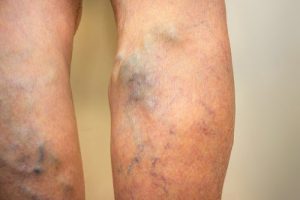
Varicose veins, overall, aren’t dangerous and typically don’t result in any complications. But recent research suggests that they may be an early warning sign for future blood clots.
The Taiwanese study found a strong association between blood clots and enlarged varicose veins.
The researchers looked at the medical records of over 425,000 adults, and although they uncovered an association, they still suggest more research to better understand the relationship and determine if both conditions may have similar origins.
Varicose veins are the result of weakening veins. Nearly 23 percent of the American population have varicose veins, and for those who do not like their appearance or want relief from symptoms, there are many noninvasive procedures that can be done to reduce them. Blood clots are very serious and can have deadly outcomes.
Dr. Shyueluen Chang explained, “Not much is known about varicose veins and the risk of other vascular diseases.” The researchers first began with the thought that varicose veins may be casual, but Dr. Change hypothesized that those with varicose veins also have greater inflammation which could trigger abnormal clotting.
The study looked at two groups of people: Those with varicose veins and those without. Those with varicose veins had higher incidences of deep vein thrombosis—blood clots—compared to the group without varicose veins. The researchers suggest that people with varicose veins have five times a greater risk of a blood clot.
The researchers concluded that varicose veins are not simply a cosmetic issue and that patients with them should monitor their health to ensure they do not develop a blood clot.
As mentioned, there are noninvasive treatments available for varicose veins, which may be a good option for those who really want to reduce their risk of a possible blood clot.
Common causes of varicose veins include prolonged standing and sitting, sitting cross-legged, rushing while shaving your legs, not building or maintaining your leg muscles, smoking, and eating a salty diet.
Read next: Signs you’re suffering from varicose veins